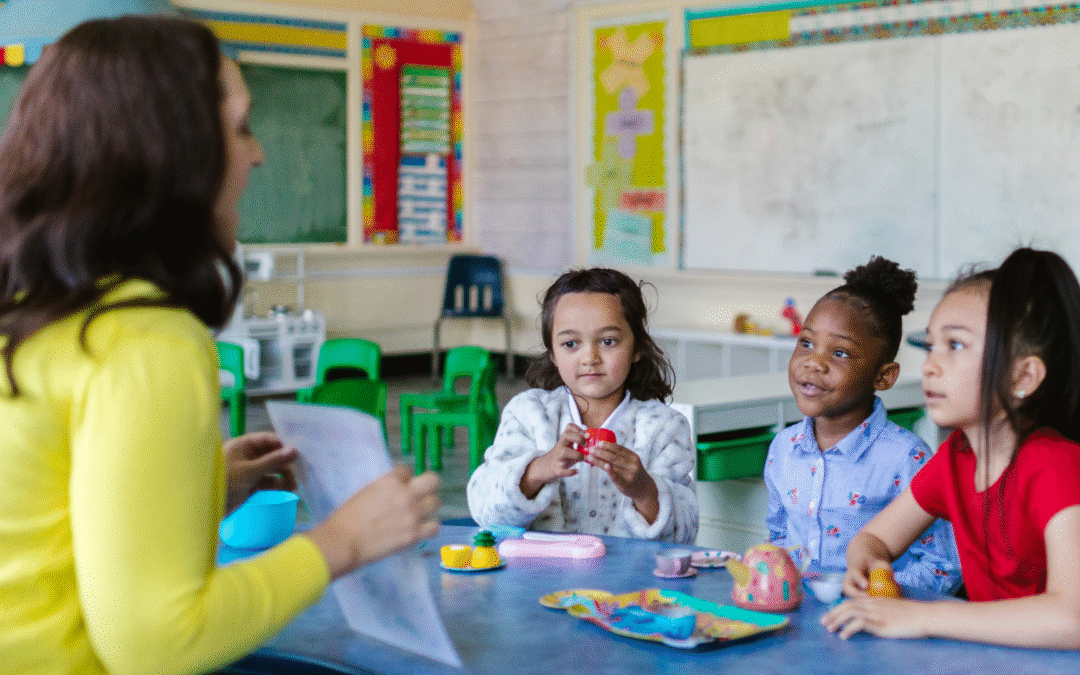If your child has been diagnosed with Attention Deficit Hyperactivity Disorder (ADHD) or a learning disability, you may feel overwhelmed, concerned, or unsure about the best way forward. These challenges are more common than many realize, and with the right support, children with ADHD and learning disabilities can thrive academically, socially, and emotionally. In this blog, we’ll walk through what these conditions are, how they often overlap, and how The Children’s Center partners with families to create customized care and learning strategies that empower children to reach their fullest potential.
What Is ADHD and How Does It Affect Learning?
ADHD, or Attention Deficit Hyperactivity Disorder, is a neurodevelopmental condition that affects a child’s ability to focus, regulate impulses, and manage energy levels. Kids with ADHD might appear inattentive, hyperactive, impulsive—or all three. These behaviors can make traditional classroom settings a challenge. It’s not that children with ADHD aren’t trying hard enough; their brains are simply wired differently.
In a learning environment, a child with ADHD may struggle to sit still, follow multi-step instructions, stay organized, or remember assignments. These difficulties can lead to frustration for the child, caregivers, and teachers. But it’s important to remember that ADHD is not a reflection of intelligence or potential—it’s a different way of processing and engaging with the world.
At The Children’s Center, we understand ADHD through a strengths-based lens. With the right structure, support, and strategies, we help children channel their energy in constructive ways and build the skills they need to succeed.
Learning Disabilities: Recognizing the Signs
Learning disabilities are neurologically-based processing challenges that interfere with basic learning skills like reading, writing, or math. Dyslexia (reading), dysgraphia (writing), and dyscalculia (math) are among the most well-known types. These challenges aren’t about lack of effort. Children with learning disabilities often work twice as hard to keep up—and may still fall behind without appropriate interventions.
The signs of a learning disability can vary by age and skill area but may include trouble recognizing letters, difficulty with spelling or handwriting, poor number sense, or avoiding reading and writing tasks altogether. Kids might feel anxious, discouraged, or misunderstood.
Early identification is key. The Children’s Center works closely with families and educators to assess a child’s unique learning profile. From there, we develop individualized strategies that support strengths while addressing areas of need. The earlier the support begins, the greater the chance for a child to grow confident and capable in their learning journey.
When ADHD and Learning Disabilities Overlap
It’s common for ADHD and learning disabilities to co-occur. In fact, research shows that nearly half of children with ADHD also have a specific learning disability. This overlap can make it more complicated to understand what’s causing academic struggles. Is it inattention due to ADHD? Or a reading difficulty tied to dyslexia? Often, it’s both.
These overlapping challenges require a nuanced, whole-child approach. At The Children’s Center, we listen carefully, observe thoughtfully, and collaborate with families and schools to create a tailored plan that honors each child’s individuality. Our approach integrates behavior support, educational interventions, and emotional wellness—all in a safe, supportive environment where kids are seen and celebrated for who they are.
By understanding the intersection of ADHD and learning disabilities, we can better meet the needs of each child, helping them feel successful, motivated, and empowered to grow.
Practical Tips for Supporting Your Child at Home
Supporting your child outside of school can make a big difference in their development and confidence. Here are some practical, caregiver-friendly tips to try at home:
1. Create consistent routines. Predictability helps reduce anxiety and keeps kids with ADHD and learning disabilities on track.
2. Break tasks into steps. Big assignments or chores can be overwhelming. Help by breaking them into manageable parts.
3. Use visual aids. Charts, checklists, and timers can reinforce instructions and help kids stay focused.
4. Celebrate effort, not just results. Kids need to know that trying their best counts—even if they make mistakes.
5. Model calm problem-solving. If something goes wrong, show them how to handle it with patience and flexibility.
6. Set up a quiet workspace. Minimize distractions during homework time with a clear, clutter-free area.
7. Stay connected with teachers. Regular communication helps you advocate for your child’s needs at school.
8. Encourage movement breaks. Physical activity can improve focus and relieve built-up energy.
9. Read together daily. Even older children benefit from shared reading—it builds confidence and connection.
10. Practice self-care. Supporting a child with extra needs is demanding. Don’t forget to take care of yourself too.
How The Children’s Center Can Help
At The Children’s Center, we offer comprehensive assessments, evidence-based interventions, and a compassionate team of professionals who specialize in working with children who have ADHD and learning disabilities. We partner with families to create customized care plans that address not only academic and behavioral needs, but also the emotional well-being of the child and the caregiver.
Whether you’ve just received a diagnosis or you’ve been navigating these challenges for a while, you don’t have to do it alone. We’re here to walk with you—offering tools, understanding, and hope at every step.
If you have questions or want to explore how we can support your child’s growth, reach out to The Children’s Center today.

